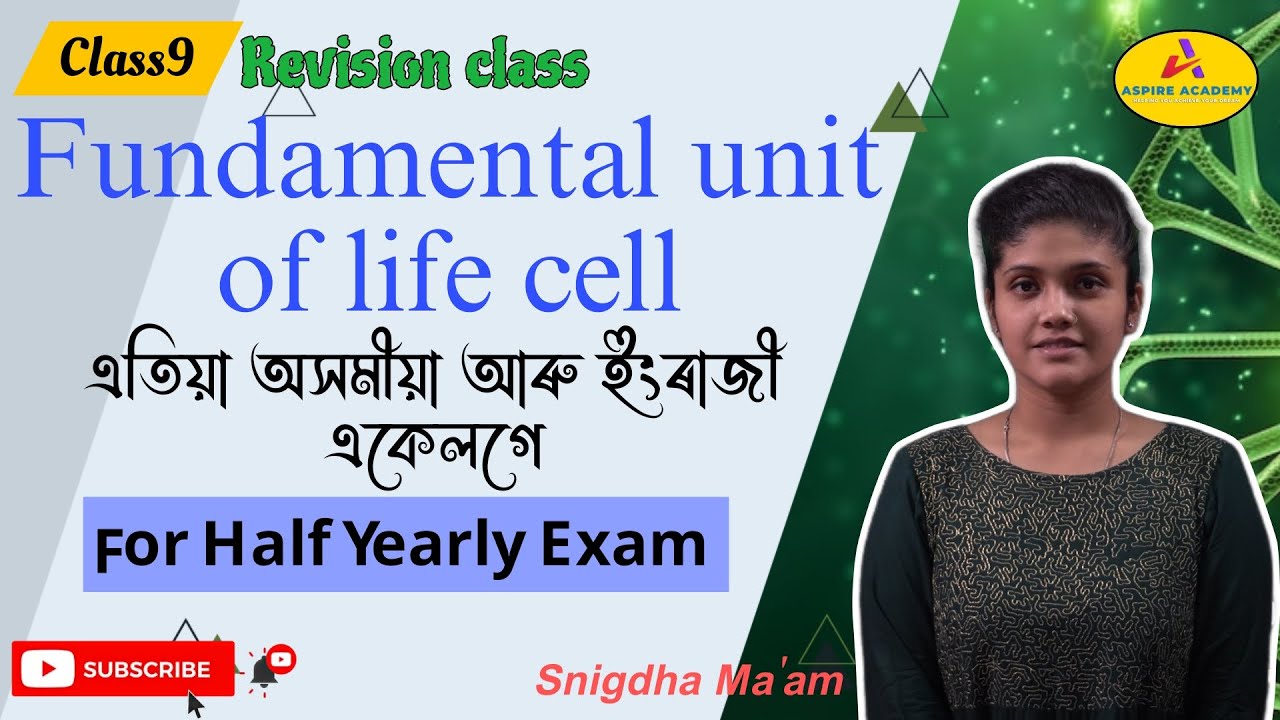Here are some exam notes on the NCERT chapter “Fundamental Unit of Life – The Cell”:
**Cell**:
– The cell is the basic structural and functional unit of all living organisms.
– Cells can be unicellular (consisting of a single cell) or multicellular (consisting of multiple cells).
**Cell Theory**:
1. All living organisms are composed of one or more cells.
2. The cell is the basic unit of life.
3. All cells arise from pre-existing cells.
**Types of Cells**:
1. **Prokaryotic Cells**:
– Lack a true nucleus.
– Examples: Bacteria and Archaea.
– DNA is present in a region called the nucleoid.
– Lack membrane-bound organelles.
2. **Eukaryotic Cells**:
– Have a true nucleus enclosed in a nuclear membrane.
– Examples: Plant cells, animal cells, and fungi.
– Contain membrane-bound organelles like mitochondria, endoplasmic reticulum, Golgi apparatus, etc.
**Cell Membrane (Plasma Membrane)**:
– It separates the cell’s internal environment from the external environment.
– Composed of a phospholipid bilayer with embedded proteins.
– Selectively permeable, allowing some substances to pass through while blocking others.
**Cell Wall**:
– Found in plant cells, fungal cells, and some bacterial cells.
– Provides structural support and protection.
– Composed of cellulose in plant cells and chitin in fungal cells.
**Nucleus**:
– Control center of the cell.
– Contains genetic material (DNA) in the form of chromosomes.
– Surrounded by a nuclear envelope (membrane).
**Cytoplasm**:
– A semi-fluid substance that fills the cell and contains organelles.
– Site of many cellular processes.
**Mitochondria**:
– The “powerhouses” of the cell, where cellular respiration occurs to produce energy (ATP).
– Have their own DNA.
**Endoplasmic Reticulum (ER)**:
– Rough ER is studded with ribosomes and is involved in protein synthesis.
– Smooth ER is involved in lipid synthesis and detoxification.
**Golgi Apparatus**:
– Modifies, processes, and packages proteins and lipids for transport.
**Ribosomes**:
– Sites of protein synthesis.
– Can be free in the cytoplasm or attached to the rough ER.
**Lysosomes**:
– Contain enzymes for digestion and recycling of cellular waste.
– Often called the “suicide bags” of the cell.
**Vacuoles**:
– Membrane-bound sacs used for storage of water, nutrients, or waste products.
– Prominent in plant cells.
**Chloroplasts**:
– Found in plant cells and some protists.
– Site of photosynthesis, where sunlight is converted into chemical energy (glucose).
**Cytoskeleton**:
– A network of protein filaments that provides structural support and facilitates cell movement.
– Includes microtubules, microfilaments, and intermediate filaments.
**Cell Division**:
– The process by which cells reproduce.
– In eukaryotic cells, cell division involves mitosis and meiosis.
**Cell Cycle**:
– The series of events that cells go through as they grow and divide.
– Includes interphase (G1, S, G2) and mitotic phase (mitosis and cytokinesis).
**Significance of Cells**:
– Cells are the building blocks of life.
– Understanding cell structure and function is crucial for understanding life processes and diseases.
– Advances in cell biology have led to breakthroughs in medicine, biotechnology, and genetics.
These notes cover the essential concepts related to the cell, as per the NCERT chapter on the “Fundamental Unit of Life.” Reviewing and understanding these concepts will help you prepare for your exam effectively.



